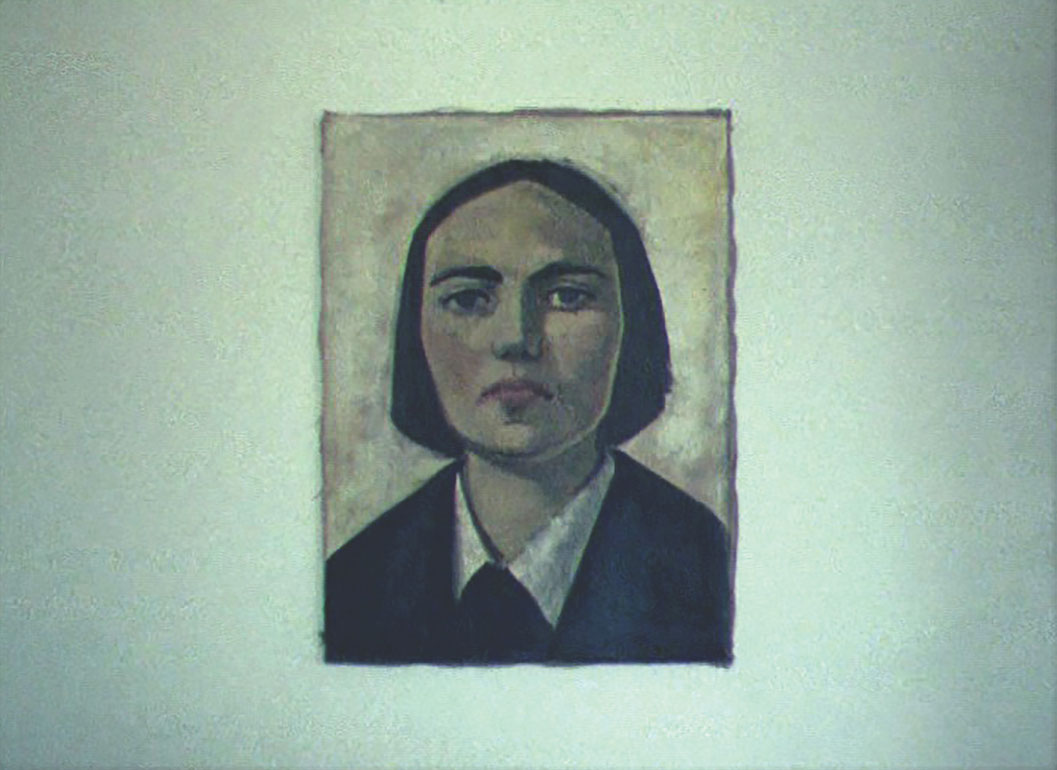Silence on the Screen
A museum visitor spends an average of eleven seconds in front of an artwork. Friedl vom Gröller turns the gaze to a painted portrait for one minute and thirty seconds. Positioned unframed on a white wall, the view functions like in a white cube that is meant to allow us to enter into dialogue with the work without the distractions of architecture or color. “Silence on the screen” reigns in the eponymous silent film in a double sense. The film screen shifts the viewer into the position of art beholder, only the slight shaking of the hand that holds the camera points to the existence of a third person placed in between—we view the artwork through their outsourced camera eye. The filmed portrait of a woman also radiates calm: large eyes stare at us from the screen—or lock onto a point beyond. After forty seconds the camera focuses on the face, now its contours appear as though framed by a halo. Coming to mind is a young Frida Kahlo as painted by Paula Moderson-Becker in earthy tones. Reddened cheeks and a dimple on a chin framed by a white blouse collar evoke questions: who is this woman? Who painted her? When was the portrait made? Artworks seek dialogue: they are also approachable and graspable without additional information; projection surfaces. Friedl vom Gröller’s portrait of a portrait in the surroundings of its reception is an invocation for contemplation as well as concentration—an appeal to one’s own pictorial competence.
(Sarah Alberti)
Translation: Lisa Rosenblatt
The view is focused on a painting, the sound is silent. The screen is doubled: as a site of projection and as the site of images that the camera quietly observes. A portrait of a woman, unknown at first. An appreciation of art on two levels.
(Berlinale Online, 2015)

